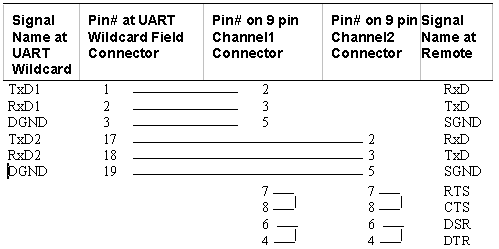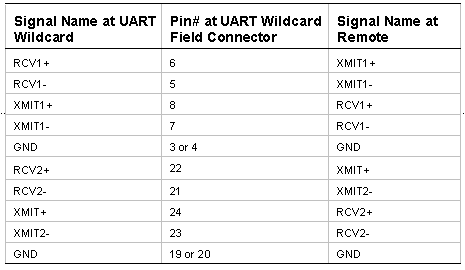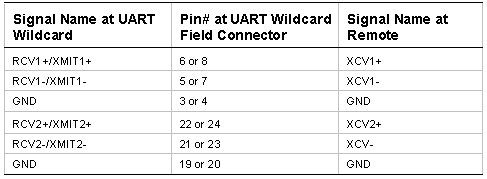


 |
 |
 |
Table of ContentsConnecting To Mosaic Controller RS422/485 Configuration Jumpers Protocol Configuration and Direction Control Registers Overview of the Software Device Driver Functions Installing the UART Module Driver Software Using the Driver Code with Forth UART Direction Control in a Multitasking System C Demonstration Program (in pdf) |
UART Wildcard User GuideCable Connections (continued)Table 1-7 Cable for Dual RS232 9-pin D Connectors  Table 1-7 illustrates the connections required to implement two RS232 ports, each using a 9-pin D-type connector as found on many laptops. Note that TxD at the local UART Wildcard connects to RxD at the remote, and the local RxD connects to TxD at the remote. Also note that the RS232 handshaking signals RTS and CTS are connected to each other with a shorting wire at the D connector. Similarly, the RS232 handshaking signals DSR and DTR are connected to each other at the D connector. This standard scheme makes the remote computer think that it is always OK to send and receive data. Table 1-8 Connections for Dual RS422 Serial Ports  Table 1-8 defines the connections for dual RS422 ports. Local RCV pins connect to remote XMIT pins, and the polarities of the local and remote pins match (+ to +, − to −). Table 1-9 defines the connections for dual RS485 ports. Local XCV (transceive) pins connect to remote XCV pins, and the polarities of the local and remote pins match (+ to +, − to −). Note that the two "RS485" jumper caps must be installed for each port that is configured as RS485; these short RCV+ to XMIT+, and RCV− to XMIT− for the specified serial channel. Table 1-9 Connections for Dual RS485 Serial Ports  |
Home|Site Map|Products|Manuals|Resources|Order|About Us
Copyright (c) 2006 Mosaic Industries, Inc.
Your source for single board computers, embedded controllers, and operator interfaces for instruments and automation